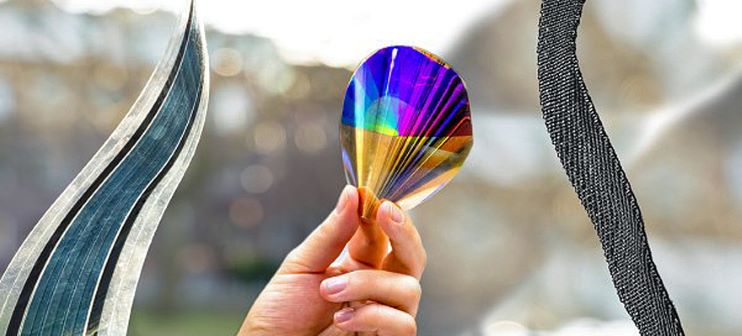

High Levels of Toxic Chemicals Detected in Everyday Receipts, Finds Study
Currently, majority of our everyday electronics are based on inorganic semiconductors, such as silicon. Crucial to their function is a process called doping, which involves weaving impurities into the semiconductor to enhance its electrical conductivity. It is this that allows various components in solar cells and LED screens to work.
Also for organic – that is, carbon-based – semiconductors, this doping process is similarly very important. Since the discovery of electrically conducting plastics and polymers, a field which received a Nobel Prize in 2000, research and development of organic electronics has accelerated quickly. OLED-displays are one example which are already on the market, for example in the latest generation of smartphones. Other applications have not yet been fully realized, due in part to the fact that organic semiconductors have so far not been efficient enough.
Doping in organic semiconductors operates through what is known as a redox reaction. This means that a dopant molecule receives an electron from the semiconductor, increasing the electrical conductivity of the semiconductor. The more dopant molecules that the semiconductor can react with, the higher the conductivity – at least up to a certain limit, after which the conductivity decreases. Currently, the efficiency limit of doped organic semiconductors has been determined by the fact that the dopant molecules have only been able to exchange one electron each.


But now, according to the research by Professor Christian Müller and his group, together with colleagues from seven other universities, have demonstrated that it is possible to move two electrons to every dopant molecule. “Through this ‘double doping’ process, the semiconductor can therefore become twice as effective,” says David Kiefer, PhD student in the group and first author of the article.
According to Christian Müller, this innovation is not built on some great technical achievement. Instead, it is simply a case of seeing what others have not seen. “The whole research field has been totally focused on studying materials, which only allow one redox reaction per molecule. We chose to look at a different type of polymer, with lower ionization energy. We saw that this material allowed the transfer of two electrons to the dopant molecule. It is actually very simple,” says Christian Müller, Professor of Polymer Science at the Chalmers University of Technology.
The discovery could allow further improvements to technologies which today are not competitive enough to make it to market. The organic solar cell technology which is still new, has an estimated cost of manufacturing within a range of $35-$105/m2 , for purely organic solar cells.
Another problem is that polymers simply do not conduct current well enough. Like organic solar cells, which have an efficiency of only 5% compared to the 15% silicon cells. And so making the doping techniques more effective has long been a focus for achieving better polymer-based electronics. Now, this doubling of the conductivity of polymers, while using only the same amount of dopant material, over the same surface area as before, could represent the tipping point needed to allow several emerging technologies to be commercialized.
“With OLED displays, the development has come far enough that they are already on the market. But for other technologies to succeed and make it to market something extra is needed. With organic solar cells, for example, or electronic circuits built of organic material, we need the ability to dope certain components to the same extent as silicon-based electronics. Our approach is a step in the right direction,” says Christian Müller.
The discovery offers fundamental knowledge and could help thousands of researchers to achieve advances in flexible organic electronics, bioelectronics, and thermoelectricity. Christian Müller’s research group themselves are researching several different applied areas, with polymer technology at the center. Among other things, his group is looking into the development of electrically conducting textiles and organic solar cells.
Picture credit: Chalmers University of Technology
The first unit of the Compressed Biogas Plant built by Reliance at the Peddapuram Industrial…
As Karnataka gains momentum in the direction of ‘waste to energy,’ the Mysuru City Corporation…
DCM Shriram Limited has announced that it has successfully commissioned a new Compressed Biogas (CBG)…
TKIL Industries has partnered with global biogas conglomerate KIS Group to advance the production of…
1. What is Awite and what does it have to offer to the Indian biogas…
The Indian Federation of Green Energy (IFGE) and the Embassy of Nepal have jointly organized…